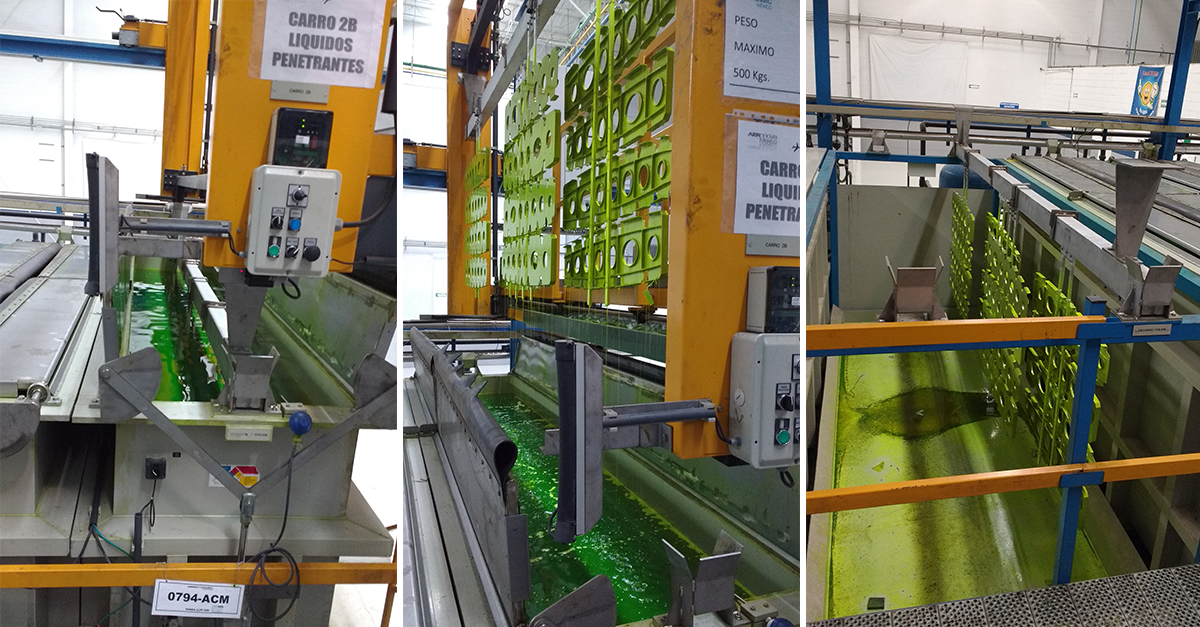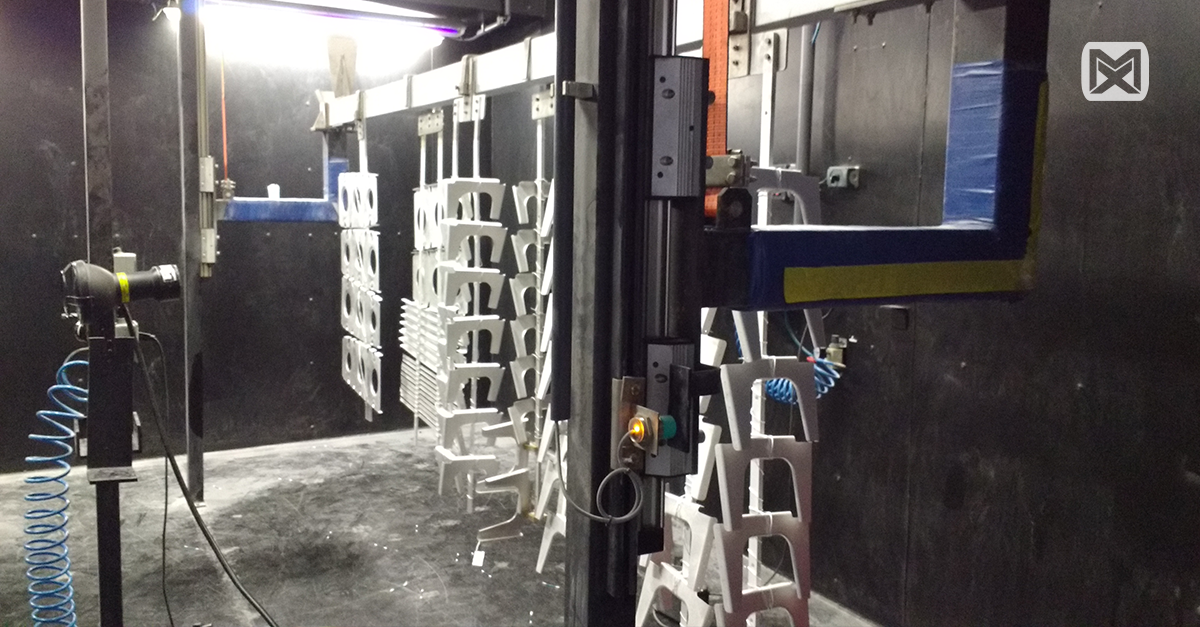
Once the decision has been made to bring testing in-house the project team will need to understand whether magnetic particle inspection or liquid penetrant inspection, or both would be the best solution for their process.
Setting up in-house testing can be a confusing and daunting project. This article simplifies the checklist of the equipment, accessories, and materials necessary when establishing in-house nondestructive testing.
Process Overview
- Identify a responsible Level III in order to establish system requirements. Learn more about Level IIIs here.
- Understand and utilize governing specifications such as ASTM E-1444 or E1417 for most MT/PT procedures. NADCAP is used for auditing purposes for Aerospace. ASNT and NAS 410 are for qualification and certification of personnel. ASME require quality assurance inspection needs on 5% of production depending on what is required in the drawings. Most ASME inspections are 100% as most components are pressure related.
- Work with Level III on procedure approvals and Level I & II on part processing.
- Work with NDT supplier or distributor on equipment selection
- Work with NDT supplier or distributor on approved materials selection. Many solutions vary based on specifications.
- Final review of procedure and processes with Level III & Quality team tested against parts with known defects

Equipment Overview
Magnetic Particle
- Mobile or stationary magnetic bench
- Note: check incoming power requirements in the facility
- Materials
- UV Lamp (fluorescent inspection only) & light meters
- System performance tools: Tool Steel Ring, Centrifuge tube and stand, Hall Effect Meter, QQI’s for technique development
- Gauss Meter
- Demagnetizer
- PPE: UV glasses, gloves, aprons
- Approvals and techniques
Liquid Penetrant
- Penetrant equipment including the following stations:
- Dip
- Rinse
- Dryer
- Developer
- Inspection booth
- Drains
- Materials (Selection guide for fluorescent penetrant may be found here)
- UV Lamp (fluorescent inspection only) & light meters
- System performance tools: Tam Panel, Known Defect standards, Hoffman Panel, etc.
- Part Handling: baskets, trays, crane for heavy parts, etc.
- Timers, refractometers (PE) etc.
- Monthly Penetrant checks in place
- PPE: UV glasses, gloves, aprons
Equipment should have the responsible Level III’s input in the purchase process to verify correct equipment will meet parts and specification needs, along with production.
Automatic or Manual Product Application
Depending on the complexity and volume of the parts being processed each location will need to determine if their application needs to be automatic or manual.
Automatic Product Application [Case Study]
Orlando de Leon, a Level III, decided to modify his penetrant line after he tested out using aerosols with an aerosol sprayer. Due to his part quantity and repetition, he was able to utilize an immersion tank to have a semi-automatic prewash station to reduce the time used on the penetrant line. Investment in an immersion tank, but this saves overall in consumables and PPE, and the time processing parts.

Automatic Product Application Benefits for Orlando de Leon
- Reduction in time spent part processing by 30% by the ability to process a mass amount of parts
- Reduction in waste by 37% by switching from aerosols cans to bulk packaging
- Reduction in PPE use from face and body covering to chest coverings
The Magnaflux Sales team can review any current LPI or MPI in-house inspection to evaluate the efficiency of your current process. Contact us here.
Prepare for Audits
At all times it is critical to maintain records and have correct certifications filed in case of an audit. If you do not have certificates on-hand or certified personal, any part inspected by non-certified personal could cause a recall of parts. Internal audits may occur twice a year but depending on your customers’ needs more audits may occur. For example, based on the parts he was testing and his customers’ needs, Orlando de Leon had 27 external audits in one year.
Find Certificate of Conformance (COC) certifications on the North American website site here, and the European website here.
Published March 16, 2021
Submit Your NDT Story
See NDT Stories on LinkedIn